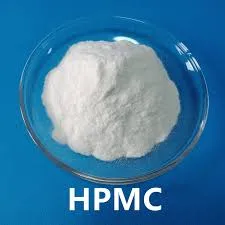
Nov . 27, 2024 18:29 Back to list
Exploring HPMC Applications in Mortar Formulations and Enhanced Building Materials
HPMC for Mortar Enhancing Construction Performance
Hydroxypropyl Methylcellulose (HPMC) is a versatile and widely used cellulose ether that plays a crucial role in the construction industry, particularly in the formulation of mortar. As a key additive, HPMC enhances the performance of mortar in various ways, contributing to improved workability, adhesion, and durability. This article explores the significance of HPMC in mortar, its advantages, and how it impacts overall construction quality.
HPMC for Mortar Enhancing Construction Performance
In addition to enhancing workability, HPMC also significantly contributes to the adhesion properties of mortar. The ability of mortar to bond with different substrates, such as masonry bricks or tiles, is essential for creating strong and resilient constructions. HPMC improves the wet adhesion of mortar, allowing it to maintain its bonding capabilities even in challenging environments. This ensures that tiles or bricks stay securely in place, thus prolonging the lifespan of the structure.
hpmc for mortar

Moreover, HPMC contributes to the water retention capacity of mortar. This is particularly important as mortar needs to remain workable for extended periods, especially in hot or windy conditions that accelerate drying. By retaining moisture, HPMC allows for better curing processes, which are necessary for achieving optimal strength and durability of the mortar. The consistent curing results in fewer cracks and imperfections, leading to greater overall structural integrity.
Another key advantage of incorporating HPMC into mortar formulations is its resistance to shrinkage. Traditional mortars can suffer from shrinkage cracking as they cure, which can compromise the bonds formed between materials. HPMC helps minimize this shrinkage, resulting in a more stable and uniform finish. This characteristic is particularly important in large-scale projects where uniformity and aesthetic quality are paramount.
HPMC is also notable for being non-toxic and environmentally friendly, which aligns with the growing trend toward sustainable construction practices. Its use in mortar formulations contributes to health and safety in construction sites, as it reduces the emission of harmful substances. Additionally, the ability of HPMC to enhance the durability of structures means that buildings made with HPMC-modified mortars may require less frequent repairs or replacements, ultimately leading to fewer resource expenditures over time.
In conclusion, Hydroxypropyl Methylcellulose is an essential additive in the production of mortar for construction. Its multifunctional properties boost workability, improve adhesion, increase water retention, reduce shrinkage, and promote eco-friendly construction practices. By facilitating better performance in mortar applications, HPMC not only enhances individual construction projects but also contributes to the long-term sustainability and resilience of buildings. As the construction industry continues to evolve and prioritize efficiency and durability, the role of HPMC as a mortar additive is likely to become even more prominent, ushering in an era of innovative and superior building materials.
-
Premium Cellulose Ether: Effective Liquid Thickener Solutions
NewsAug.29,2025
-
HPMC for Tile Adhesive: Enhanced Bonding & Workability
NewsAug.28,2025
-
tile-bonding-additives-for-stronger-bonds
NewsAug.22,2025
-
construction-grade-rdp-for-wholesale-needs
NewsAug.22,2025
-
trusted-hec-supplier
NewsAug.22,2025
-
HEC Solutions for Industrial Excellence
NewsAug.22,2025







